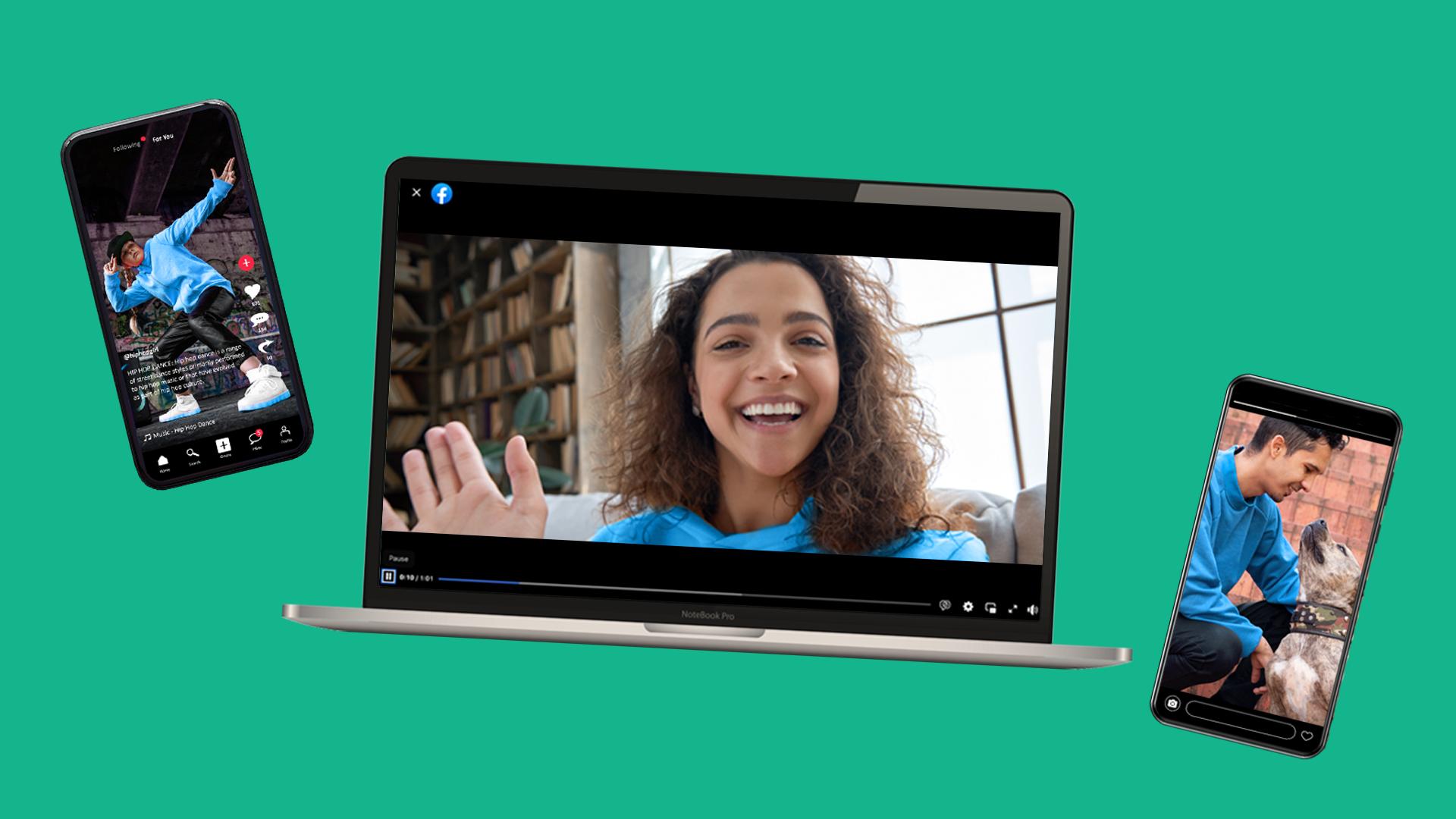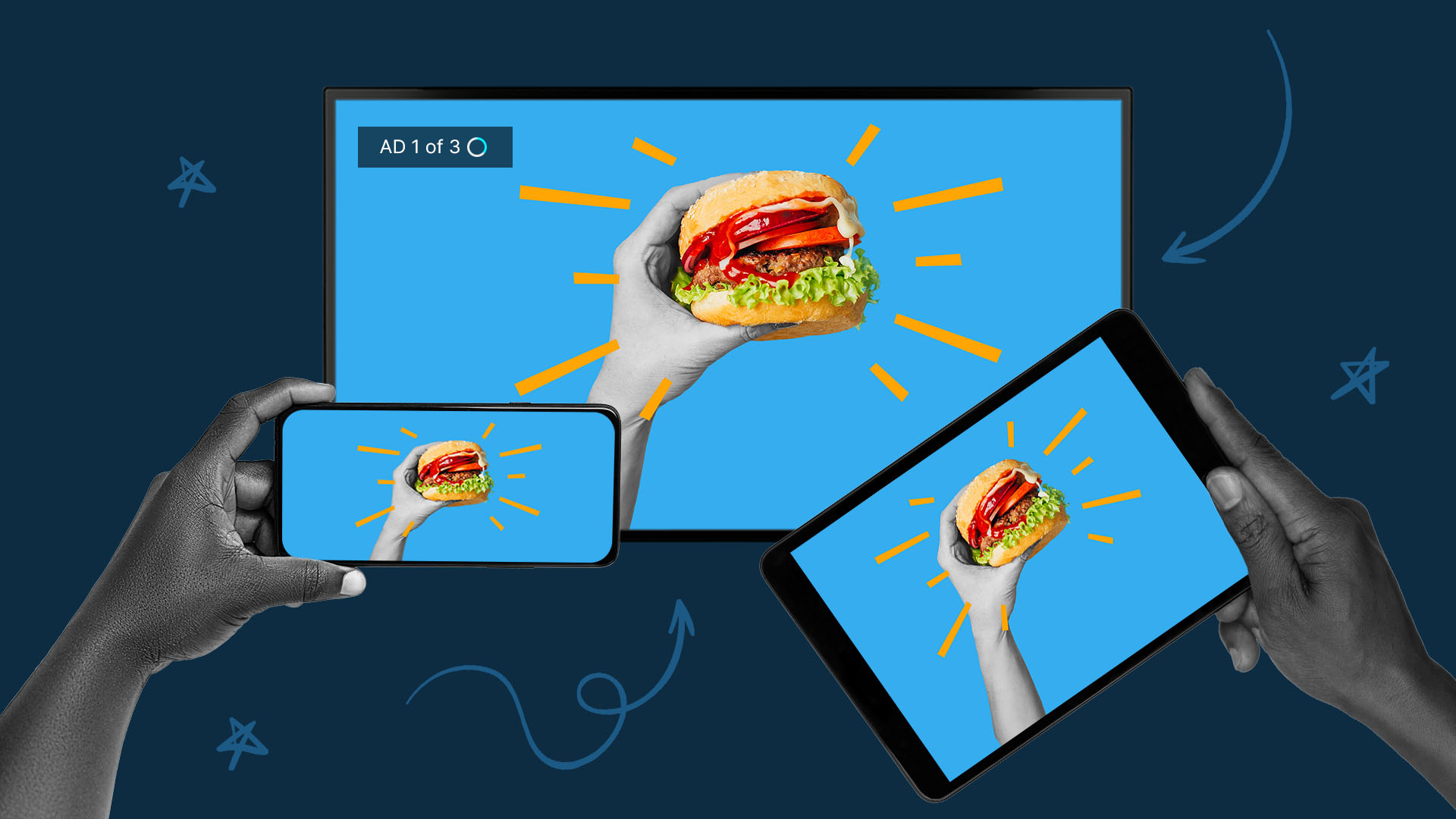Social Media Video Marketing: How to Do It (+ Platform-Specific Tips)

Unless you’re a marketer who’s been living under a rock for the past 15 years, you know that social media is ubiquitous. And as social media continues to evolve into a video-first channel thanks to the popularity of TikTok and Instagram Reels, the opportunities to reach your target audience exactly where they are will only continue to grow over the coming years.
But you probably still have that million-dollar question on your mind: how do you harness the power of social media video to hit your advertising campaign goals?
Read on to get a better understanding of the value of social media video marketing, and learn a few tips for running ads on specific platforms.
What Is Social Media Video Marketing?
Social media video marketing involves any marketing videos that target the various social media platforms that are eating up all your spare time and attention. You probably don’t need a reminder, but these include:
- TikTok
- Snapchat
They all ostensibly have different focuses. But together, they have the world’s attention, so you need to be mindful of them during the video content marketing process.
Why Is Social Media Video Marketing Important?
That comes down to numbers. Around seven in 10 Americans use social media for one reason or another: to stay connected, to read news, to share information, or to decide what purchases to make.
If you can make videos that are as fun and engaging as the ones that audiences are already passing around to one another (and if you hit the holy grail of going viral), then you can disarm your potential customers and make them consider your product without feeling like they’re being served an ad (with all the skepticism that warrants).
How to Make Videos for Social Media
Making videos for social media means following the rules of production for any medium, which results in creating entertaining content. But social media has some specifics you need to master, too.
Study the Entire Video Production Process
Start with the big picture and get a sense of the video production process. It might feel overwhelming, but it’s broken down into a few stages, including a handy glossary. It starts with more abstract questions — like determining your overall style and feel and working out exactly what resources you can bring on your shoot — and then gets more granular as you work out whether you can make your big video marketing ideas fly and how to enact your vision, down to how you launch it into the world.
Clearly Define Your Video Marketing Goals
The clearer the goals, the more precisely you can calibrate your social media video marketing efforts. Some possible goals may include:
- Engaging new customers and broadening your base
- Encouraging returning customers
- Launching a new product
Knowing what you want is half of what makes it possible to create a successful campaign.
Know What Your Audience Wants
Knowing what your audience wants is the other half. Do target viewers need information? Do they want to be engaged emotionally? Do they want to watch something funny? You need to identify the pain point that your product addresses, which then allows you to create a spot that’s economical and to that point. You also have to define who your audience is, demographically. Male? Female? Older? Younger?
Study Social Media Video Trends
Social media is a multiheaded beast. The popularity of various platforms waxes and wanes. Facebook may be dominant, but it’s been losing its cool with younger audiences, who are migrating to TikTok and Snapchat. That’s OK if you’re marketing toward older audiences, but if you’re trying to target younger generations, then you need to know what’s trending on TikTok. That could mean up-to-the-second dance challenges and other micro-genres that are flourishing, whose popularity you can ride if you want to create spots in the style of user-generated content (UGC), or become the next viral video idea.
Some big-picture social media video trends for marketers include the merging of social media and e-commerce, and the increasing dominance of video content on social media. To stay up to the minute, devote some time to the various platforms and see what’s going on for yourself, too.
Choose Your Video Types
Different videos are better suited for different platforms. But even once you’ve chosen the platform that’s right for you, you still have to decide what type of video makes the most sense for your product. How-to videos (to name one example) work well for products that involve a step-by-step process that you need to educate your customers on.
Know the Ad Specs and Formats
Every platform also has video ad specs you need to master, which will influence how you shoot your video. For example, Facebook offers a multitude of different ad possibilities (e.g., Instant Video, Stories, 360 Video), each of which requires a different aspect ratio. And many platforms are constantly updating their offerings (like Instagram, which has almost entirely shifted to Reels). So you need to stay on top of any changes.
Additionally, smart marketers will make ads that feel like native video content — that is, ads that feel organic and specifically created for each platform. You can do that with some clever repurposing, but each social media platform has its own look and feel, and consumers expect to see content that feels of a piece with everything else, stylistically.
Schedule and Promote the Videos
It’s not enough to have excellent, catchy spots. You also have to schedule and promote them so they connect with your target audience in the most impactful way possible. That could mean tying them to the launch of your new product, or using data to see when your target audience is most likely to be online and see your ads.
Analyze Metrics and Test New Ideas
Since your campaign exists online, you can take advantage of the analytics that social media platforms offer. If your campaign isn’t meeting your goal, it’s easy to retool your footage into different spots for the same platform or even try reworked footage on different platforms, until your point is coming across as you want it to.
Platform Specific Tips and Strategies
When it comes to social media video marketing, the devil is in the details, so let’s get granular.
Facebook Video Marketing
Facebook skews older and is often for people seeking information, entertainment, and news, so Facebook video marketing should involve ads that are a bit on the longer side (10 to 20 seconds), have a narrative focus, and provide information. Even a spot that started life as UGC should be repurposed and feel more like a how-to or instructional video. You should also put spots across all of the different kinds of Facebook videos, like Stories, to make sure your message is coming across.
Learn more about Facebook video production.
Instagram Video Marketing
Instagram is deliberately starting to feel more like TikTok, which means making use of the intimacy and directness that Reels content affords. When engaging in Instagram video marketing, think about ways to bring audiences in with behind-the-scenes Reels content, such as endearing outtakes. Remember that Instagram is also becoming more like a commerce site itself, so showcasing new features or a particular product followed by a clear call to action (CTA) can be effective. And keep the content coming: Instagram video marketing relies on a constant stream of videos to keep your audience hooked.
Learn more about Instagram video production.
TikTok Video Marketing
When it comes to TikTok video marketing, you need to know what’s trending. Find a way to incorporate current trends (background music, for example, or a dance challenge), but also consider something that might really help your spot stand out, such as animation or stop-motion.
Learn more about TikTok video production.
YouTube Video Marketing
With YouTube’s incredible 2.1 billion viewers worldwide, it’s clear that YouTube video marketing is a compelling way to reach your audience. Since your audience is there to watch videos, make sure to include a sense of urgency and strategic CTAs within your videos, keep your branding visible, and pay close attention to your casting to make sure your talent is relatable and appealing.
Learn more about YouTube video production.
Snapchat Video Marketing
Snapchat video marketing is all about making an impression, quickly — the thing that sets Snapchat apart from the other platforms is that its messages disappear, after all. So keep the tone conversational and fun; UGC-style content works really well for Snapchat, and it’s important to keep our message upfront. Snapchat recommends putting your payoff in the first five seconds of your spot (the younger Snapchat audiences may be covetable for your brand, but bear in mind their shorter attention spans, too).
Pinterest Video Marketing
Pinterest focuses on mood boards and aesthetics, so it makes sense that Pinterest video marketing is all about looks. Pinterest’s visual search is unique to the platform, too. So make sure your video is eye-catching, whether it’s live-action or animated. Emphasize novelty and creativity in your approach, bearing in mind that Pinterest users are there to be inspired. And create a narrative with your product in the spotlight, which is then shoppable, to make the process as smooth as possible.
- Want to expand beyond social? Learn more about CTV advertising.
Creating Videos for Social Media at Scale
Video marketing on social media can feel overwhelming as you try to grab the attention of hundreds of millions of browsers, all with diverse interests and needs — but it needn’t be!
QuickFrame knows how to plan shoots and leverage footage to create striking and effective campaigns that get results across all platforms. QuickFrame then uses data to make sure that your videos for social media marketing are hitting your target audience. If they don’t click at first, QuickFrame will keep refining them until you meet all your sales goals.
Video Marketing on Social Media: Final Thoughts
Video marketers have to meet their potential customers where they are, and that means using the power of social media video. But you don’t have to go it alone. Partner with QuickFrame, an intelligent video production platform, and get a campaign that’s eye-catching — and thumb-stopping — to get the results your brand needs.
Do More with Video
Learn how we can help you produce more quality videos affordably and at scale.


